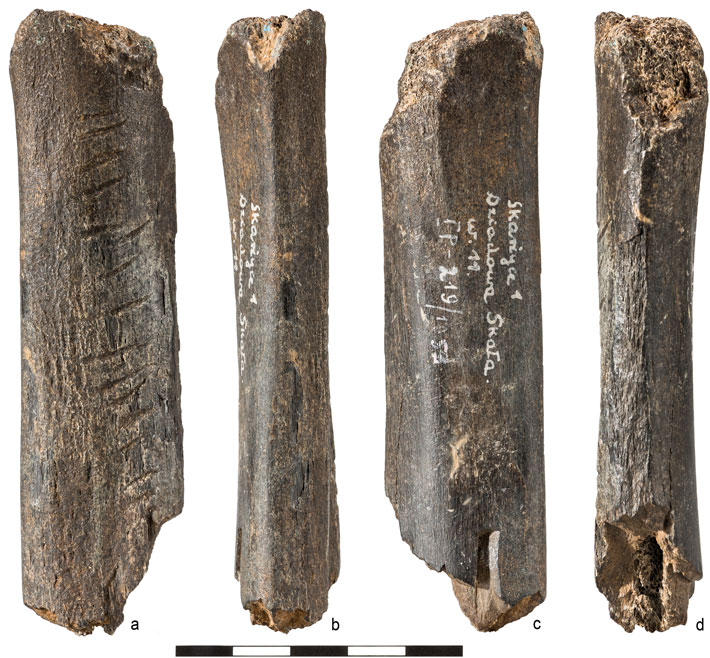 WROCŁAW, POLAND—IFL Science reports that a team of researchers led by Tomasz Płonka and Andrzej Wiśniewski of the University of Wrocław has examined an engraved bear bone with microscopy and X-ray computed tomography. Discovered in the 1950s in southern Poland’s Dziadowa Skała Cave, the bone has been dated to between 115,000 and 130,000 years ago, and is thought to have been engraved by Neanderthals. The researchers determined that the marks on the bone are orderly, and do not resemble marks made by butchery or accident, or as a side-effect of another activity. Experiments aimed at recreating the marks show that they were made by a right-handed person using a retouched stone tool using repeated movements, all in one direction. All of the marks are also thought to have been made at the same time, perhaps as decoration or as numerical notation. The researchers concluded that the incisions are evidence for the use of symbols. Read the original scholarly article about this research in Journal of Archaeological Science. To read about the earliest known bone point, go to "The Bone Collector."
WROCŁAW, POLAND—IFL Science reports that a team of researchers led by Tomasz Płonka and Andrzej Wiśniewski of the University of Wrocław has examined an engraved bear bone with microscopy and X-ray computed tomography. Discovered in the 1950s in southern Poland’s Dziadowa Skała Cave, the bone has been dated to between 115,000 and 130,000 years ago, and is thought to have been engraved by Neanderthals. The researchers determined that the marks on the bone are orderly, and do not resemble marks made by butchery or accident, or as a side-effect of another activity. Experiments aimed at recreating the marks show that they were made by a right-handed person using a retouched stone tool using repeated movements, all in one direction. All of the marks are also thought to have been made at the same time, perhaps as decoration or as numerical notation. The researchers concluded that the incisions are evidence for the use of symbols. Read the original scholarly article about this research in Journal of Archaeological Science. To read about the earliest known bone point, go to "The Bone Collector."
Bear Bone Engraved by Neanderthals Studied
